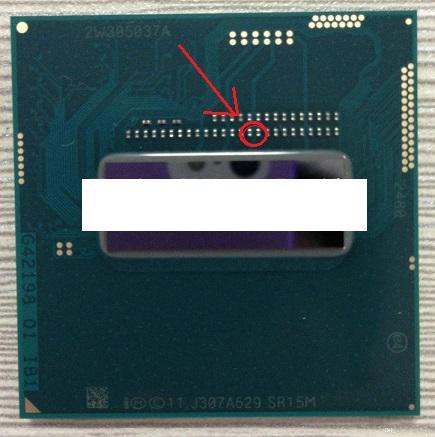Search the Community
Showing results for tags 'processor'.
-
Hi, maby somebody possible to help me with lenovo z710. Recently i change i3 4000m to i7 4710mq. Two days i7 works well, but for now, i can't load my pc. I was returning my older cpu, but with 4000m but with it, my computer didn’t even try to run. now the computer costs 4710 and sometimes it is possible to go to Bios, but usually the black screen hangs for a long time, and after trying to load OS I get a blue screen
-
So with AMD's 8 core Zen processor supposedly being released in January 2017, do you think it will keep up with Intel's latest offerings? And what is the max you'd be willing to pay for it? I've read indications it may be priced around $300 and be competitive with Intel Broadwell-E processors so if that is the case, it may be time for AMD to shine again.
-
In a sad day for the tech world, one of the pioneers of the PC industry and ex-CEO of Intel, Andy Grove, has passed away at the age of 79. As noted by the article on Intel's website, Andy Grove was Intel's first hire in 1979 as company President after Gordon Moore and Andrew Noyce founded the company and then later was CEO in 1987. His legacy includes shifting Intel's focus from memory chips to computer processors helping transition Intel from a company that made $1.9 billion in revenue to $26 billion. Grove played a critical role in the decision to move Intel’s focus from memory chips to microprocessors and led the firm’s transformation into a widely recognized consumer brand. Under his leadership, Intel produced the chips, including the 386 and Pentium, that helped usher in the PC era. The company also increased annual revenues from $1.9 billion to more than $26 billion. Grove was both an astute engineer and a careful student of business management. His books High Output Management (1983) and Only the Paranoid Survive (1999) remain some of the most highly regarded management books. Grove was also active in philanthropy and helped donate towards Parkinson's research as well as donating $26 million to the City College of New York which helped establish the Grove School of Engineering. He was married to his wife Eva for 58 years and is survived by 2 daughters and 8 grandchildren. View full article
-
- intel
- andy grove
- (and 5 more)
-
We all love drama between technology companies and the latest deliciousness comes courtesy of AMD. They have a 4 minute video on YouTube that questions whether or not SYSmark is a reliable, objective benchmark to use when evaluating performance between different systems. AMD's video opens with John Hampton, Director Computer Client Products, talking about how it is very important in choosing the right benchmark when evaluating a purchase because if you choose the wrong one , you can end up overpaying for technology or getting a lesser performing PC. To emphasize his point, he indirectly mentions Volkswagen's diesel debacle and uses the latter case as an example of how even established organizations can be misleading. We are then introduced to Tony Salinas, an AMD Engineering Manager, who runs through a couple tests in SYSmark using two notebooks, one that has an Intel i5 CPU and the other with an AMD FX CPU. SYSmark returns a score of 987 for the Intel system and 659 for the AMD one which is a delta of 50%. AMD notes that this is misleading and not reflective of real life performance. To prove this, they run a different benchmark called PCMark 8 on both systems and the results show the Intel i5 system scoring 4199 and the AMD equipped one 3908 which is a delta of 7%. AMD says this is a far more realistic indicator of true performance as PCMark 8 tests the CPU, GPU and video subcomponents rather than emphasizing the CPU like SYSmark does. And just to drive the point home some more, AMD created their own in-house test using Microsoft Office Suite where they run a custom script on both notebooks and then measure the start and end of a task with a time stamp to gauge performance. Their in-house test shows the Intel system completing the task in approximately 61 seconds while the AMD based one finished it in roughly 64 seconds which is a delta of 6-7%. As AMD's results line up with those found with PCMark 8, they contend that PCMark 8 is a more fair and balanced indicator of overall performance while SYSmark is not and therefore should be discarded by any potential customers as a tool for evaluating a purchase. Intel system using AMD in-house test: Test completed in ~61 seconds. AMD system using AMD in-house test: Test completed in ~64 seconds. They also take the time to remind us that the FTC has required SYSmark published benchmarks to contain fine print that notes their benchmark may only be optimized for Intel. Of course, this may have something to do with the fact that AMD resigned from BAPco consortium. Finally, AMD notes that a transparent benchmark should meet very specific criteria which includes being realistic, unbiased, objective and transparent, all of which SYSmark is not apparently. While it's fun to see these types of videos from AMD, they also highlight the fact that the company is facing an uphill battle on all fronts, whether it's CPU or GPU, and 2016 may be the year that makes or breaks them. View full article
-
The first processor that can use light to communicate with the external world is the result of a combined effort between Universities of California - Berkeley, MIT and Colorado, Boulder. The new chip, described in a paper published Dec. 24 in the print issue of the journal Nature, marks the next step in the evolution of fiber optic communication technology by integrating into a microprocessor the photonic interconnects, or inputs and outputs (I/O), needed to talk to other chips. Advantages of the new chip: Greater bandwidth with less power (10x - 50x greater than current electrical microprocessors and consumes 1.3 Watts of power to transmit a terabit of data per second). Signal can be transmitted way further without the need of a repeater (1m is approximately the limit for high-speed electrical links). Different wavelengths could be used at the same time to increase data transfer. These adaptations all worked within the parameters of existing microprocessor manufacturing systems, and that it will not be difficult to optimize the components to further improve their chip’s performance. The current research lead to the creation of two new startup companies, one is Ayar Labs (ex OptiBit) where researchers are focusing on photonic interconnects while SiFive is commercializing the RISC-V processors. Source: Berkeley View full article
-
Hello, Last week I had tried to change the default processor thermal grease to a Coollaboratory Liquid Metal Pad on my Alienware 18. After carefully applied, I turned on my laptop and I did some load tests (wPrime) to monitor the cpu temps. After some seconds, I heard a noise inside my laptop and it becomes turned off. The next time that I had tried to turn on the laptop, It beeped 5 or 7 times. So, I decided to open the laptop and examine what happened. When I removed the processor I saw that the Liquid Pad had leaked and reached some Die Side Capacitors. So, I removed the Liquid Metal Pad, and as gift it brings to me two capacitors together! I reseated the processor again and I turned on the laptop again. It works fine. I did various tests and it appears to be Ok with exception of Intel Processor Diagnostic Tools that stuck on Reading Cache Size step. I would like to know if these missing capacitors has some importance or cause some issues in case they are missing/damaged. What you recommend? Theres some way to test all components? Can I replace these capacitors for another? If yes, whats the specification? I dont took a picture of cpu, but on the following link I marked the capacitors of red. Very Thanks.
- 4 replies
-
- 4930mx
- capacitors
-
(and 3 more)
Tagged with:





